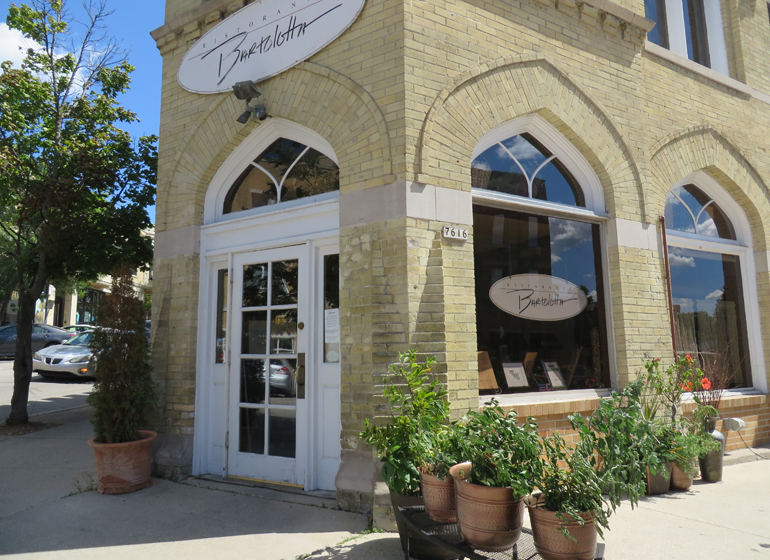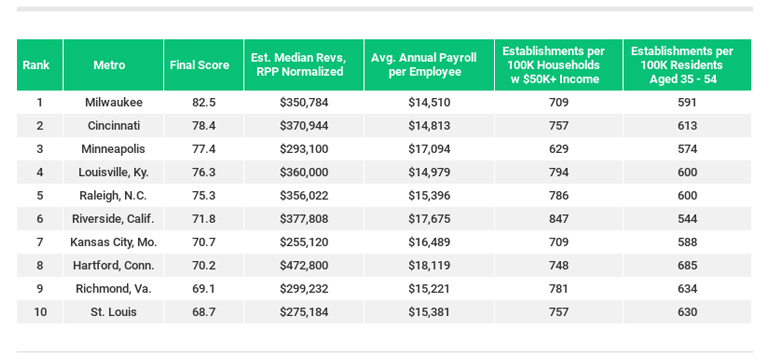The continual boom of development throughout the metro Milwaukee area has brought an abundance of new eateries to the city in recent years. Some of these restaurants come and go, closing for various reasons, but others remain open and some grow to operate additional locations.
Based on the number of concepts that have recently popped up throughout the Milwaukee area, even in just the past year alone, it seems the local market could provide fertile ground for restaurateurs taking their first steps into the industry. That’s what a recent study by Charlotte, North Carolina-based loan broker LendingTree Inc. suggests.

It ranks Milwaukee as the No. 1 “most promising” location in the country to open a restaurant. The study analyzes the 50 largest metro areas to determine which cities hold greater opportunities of success for prospective restaurateurs.
“Restaurants are probably one of the most difficult businesses to run,” said Kali McFadden, senior research analyst at LendingTree. “We wanted to see where people who might be interested in jumping into this most difficult of enterprises might have a better shot.”
Findings were based on key industry factors, including annual revenue, cost of labor and the number or restaurants in relation to a city’s dining population.
Milwaukee came out on top thanks to its low cost of labor. According to the study, average annual payroll per restaurant employee in Milwaukee is $14,510, compared to the other top-ranked cities in the LendingTree study, including Cincinnati with $14,813 and Minneapolis at $17,094.
Combine that with the number of restaurant establishments Milwaukee has per 100,000 households with incomes of $50,000 or more, which are the households that spend the most money on dining out: 709. Cincinnati, which is ranked second, has 757. And by extreme comparison, New York City, which is ranked 50th, has 993 restaurants per 100,000 households with incomes of $50,000 or more.
Cities deemed as most promising for restaurateurs are, like Milwaukee, smaller in size, likely have lower costs of living, and feature culinary scenes that are considered up-and-coming. Therefore, the restaurant population is less dense than those in cities such as San Francisco or New York.
Fewer restaurants means greater business opportunity for new owners and operators, but it could also mean diners are underserved, McFadden said.
The notion that there are too many – or even enough – Milwaukee-area diners to go around is not a popular viewpoint among local restaurateurs, many of whom have long raised concerns about a restaurant bubble or an oversaturated market.
“A market can only support so much,” said Joe Bartolotta, co-owner of The Bartolotta Restaurants. “We really need density to make restaurants profitable. If your restaurants are empty at 8:30 or 9 o’clock every night, and you have the infrastructure to support another turn, but that turn never comes, that’s part of the problem in Milwaukee.”
As veteran restaurateurs, brothers Joe and Paul Bartolotta have played a major role throughout the past two decades in shaping the local restaurant scene, opening Ristorante Bartolotta in 1993 as their first establishment. The restaurant group has since grown to operate 11 dining concepts, both fine and casual, throughout the metropolitan Milwaukee area.
Bartolotta said the data from the LendingTree study might be misleading as it failed to account for local industry challenges, such as talent shortage and population density.
Bartolotta warns prospective restaurateurs to “go in with (their) eyes open,” and stressed the importance of loving the work and taking a business-oriented approach to restaurant ownership.
“I think it’s awesome that people dive into the industry and try to make a go of it, but I’m concerned that this (study) paints a picture that it’s easy to do in Milwaukee and that simply is not the truth,” he said.
Amidst these industry-wide and local challenges, Caitlin Cullen has learned to put her trust into at least one thing during the past two years as chef and owner of The Tandem in Milwaukee’s Lindsay Heights neighborhood: the diners.
“Milwaukee is hungry,” she said. “It’s hungry for different options. Milwaukee wants to try new neighborhoods, new ideas, new flavors.”
The Tandem operates as a teaching restaurant, employing and training high school graduates from the surrounding neighborhood. Opening in 2016 with a then-inexperienced staff, the restaurant got off to a rocky start during its first few months.
But despite long wait times and the occasional undercooked meal, Cullen said, the local community continued to dine at the restaurant and support its mission.
Based on this experience, Cullen, who moved to Milwaukee five years ago after growing up in Michigan and previously living in the Dominican Republic, agrees with the study’s sentiments.
“Opening a restaurant is not a good way to get rich or to see your family a lot, but if it’s something you’re passionate about, and if you know what you want, there is a space for your idea,” she said. “Milwaukee is willing to give you a shot.”
The 10 most promising places to open a restaurant


